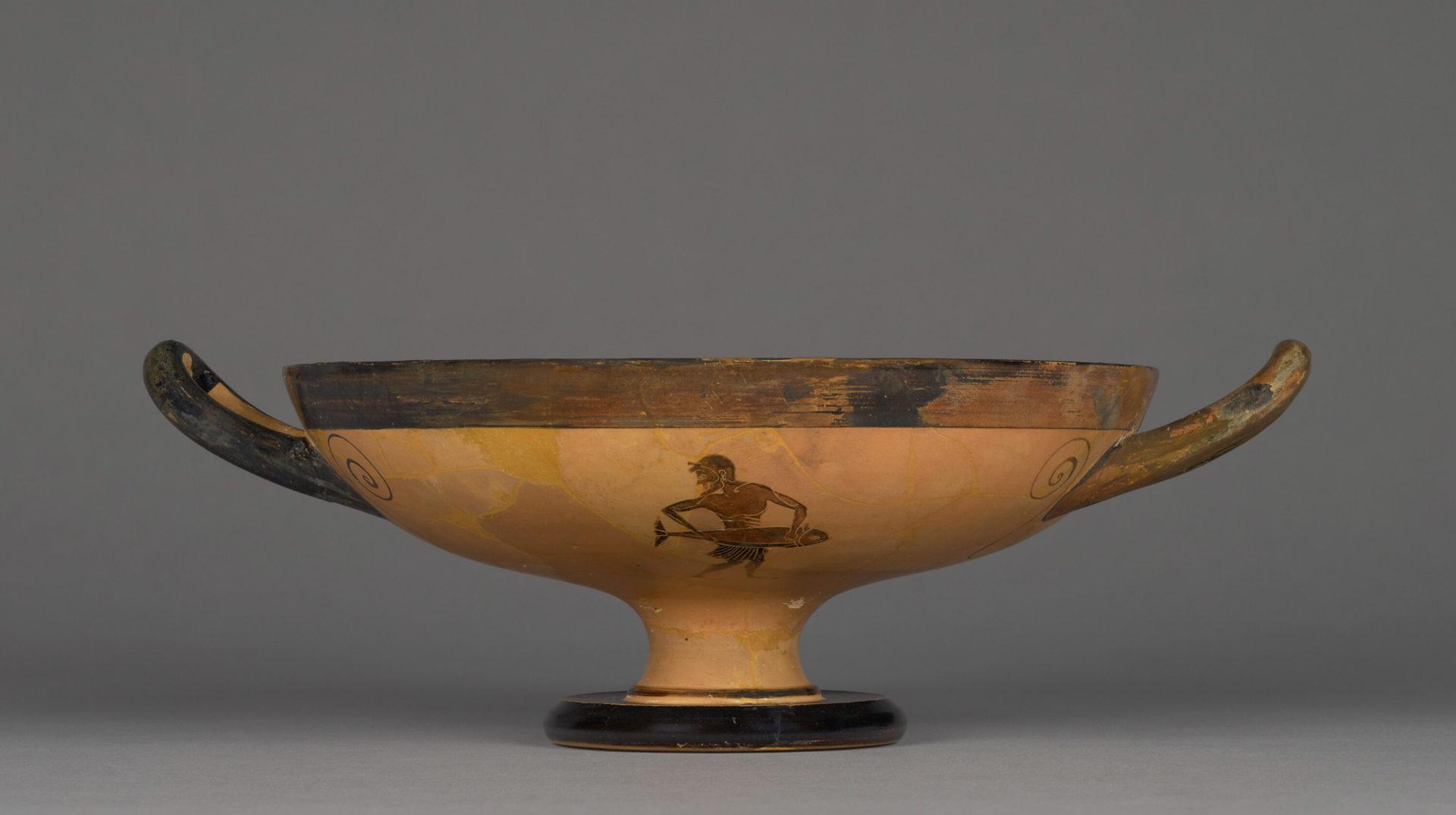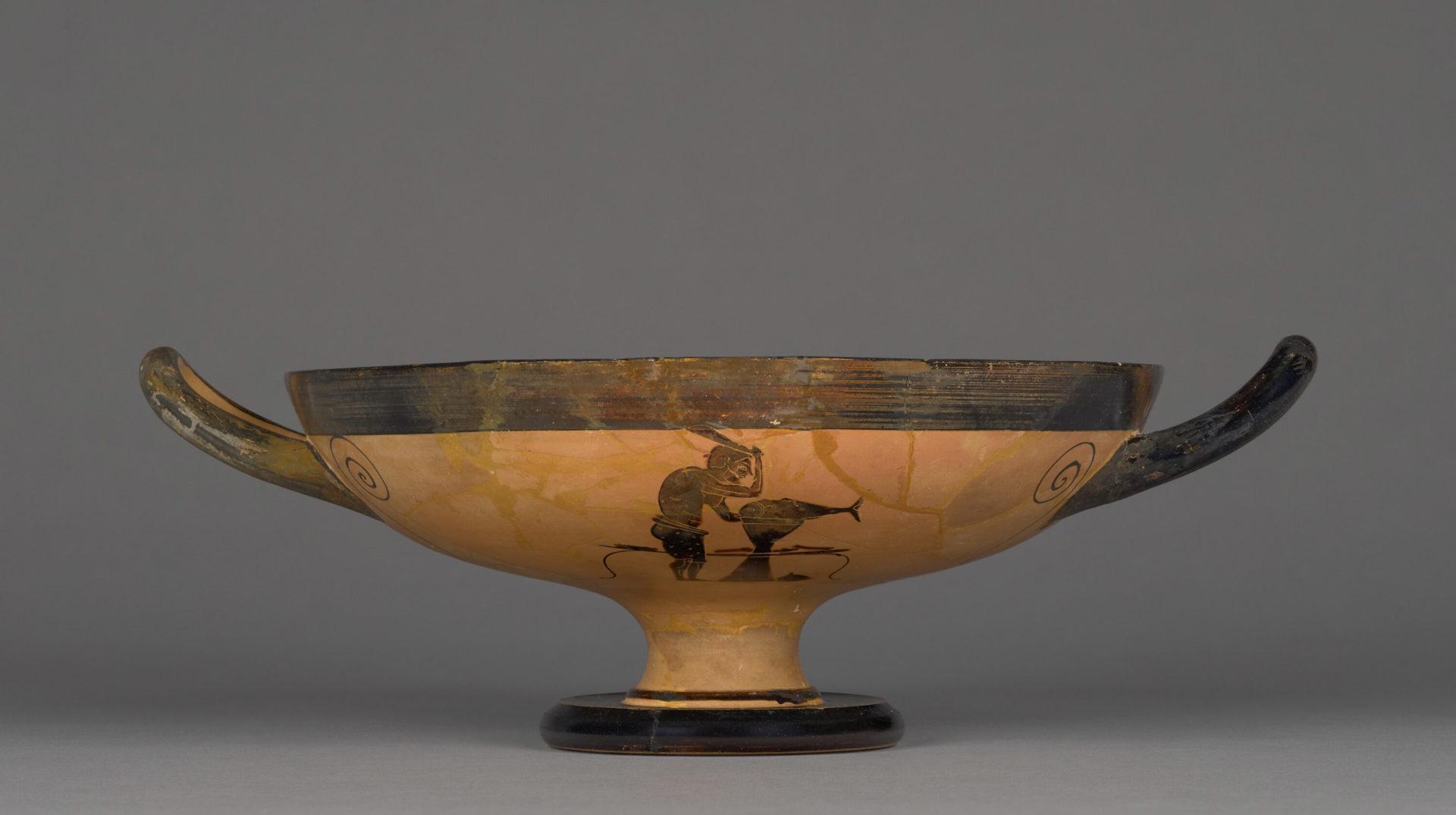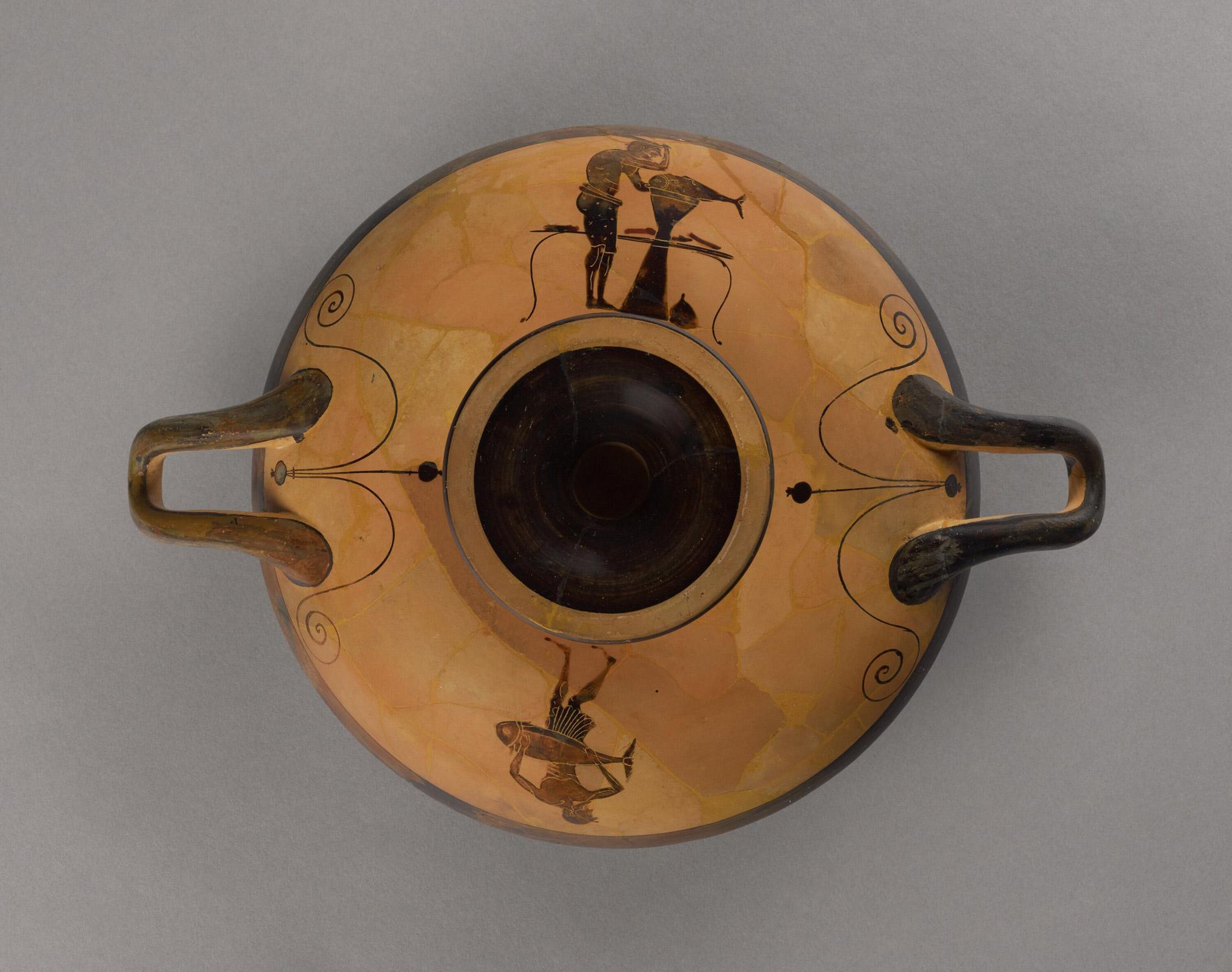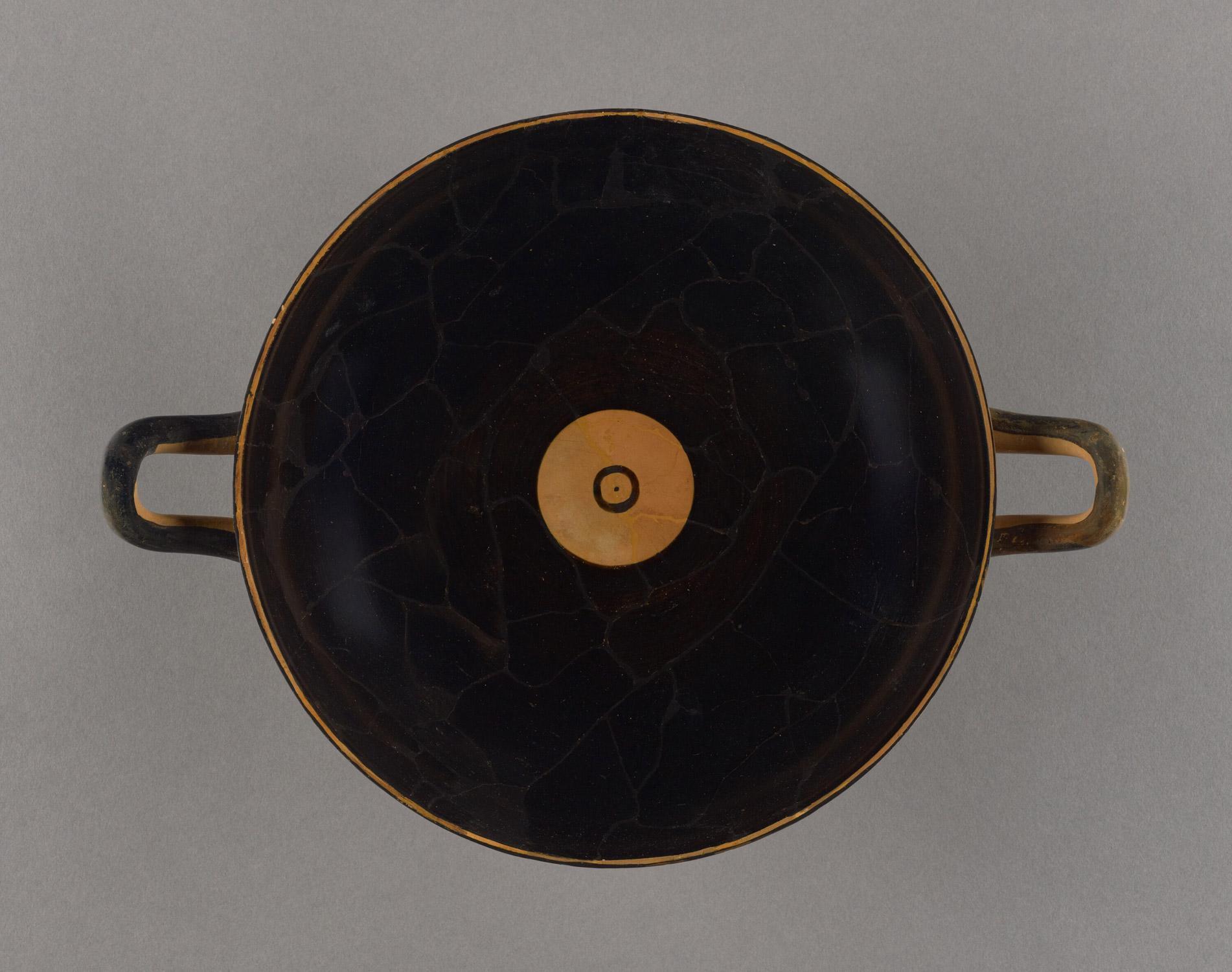







“Use a tail‑cut from a female tuna…
Slice it and bake it to a turn, adding a little salt and oil. Eat the slices hot, dipping them in piquant sauce. It is good also if you eat it plain…
But if you serve it sprinkled with vinegar it is perfection.”
This was the culinary advice of Archestratus of Gela, a gourmet who lived in one of the Greek colonies in Sicily around the mid‑300s B.C.E.
Given Greece’s extensive coastline, fish were important in the Greek diet, but depictions of fishing and the sale of fish are rare in Greek art.
This Athenian black‑figure kylix or cup depicts a fish market. On one side, a fishmonger prepares a tuna for sale. He is about to carve up the fish on a chopping block. Pieces already cut from another fish lie on the table behind him and a fish head rests at his feet. On the other side, another man carries a tuna, perhaps freshly caught.
The kylix is attributed to an artist close to the Theseus Painter (Greek / Attic, active about 510 – about 490 B.C.)
Source: J. Paul Getty Museum